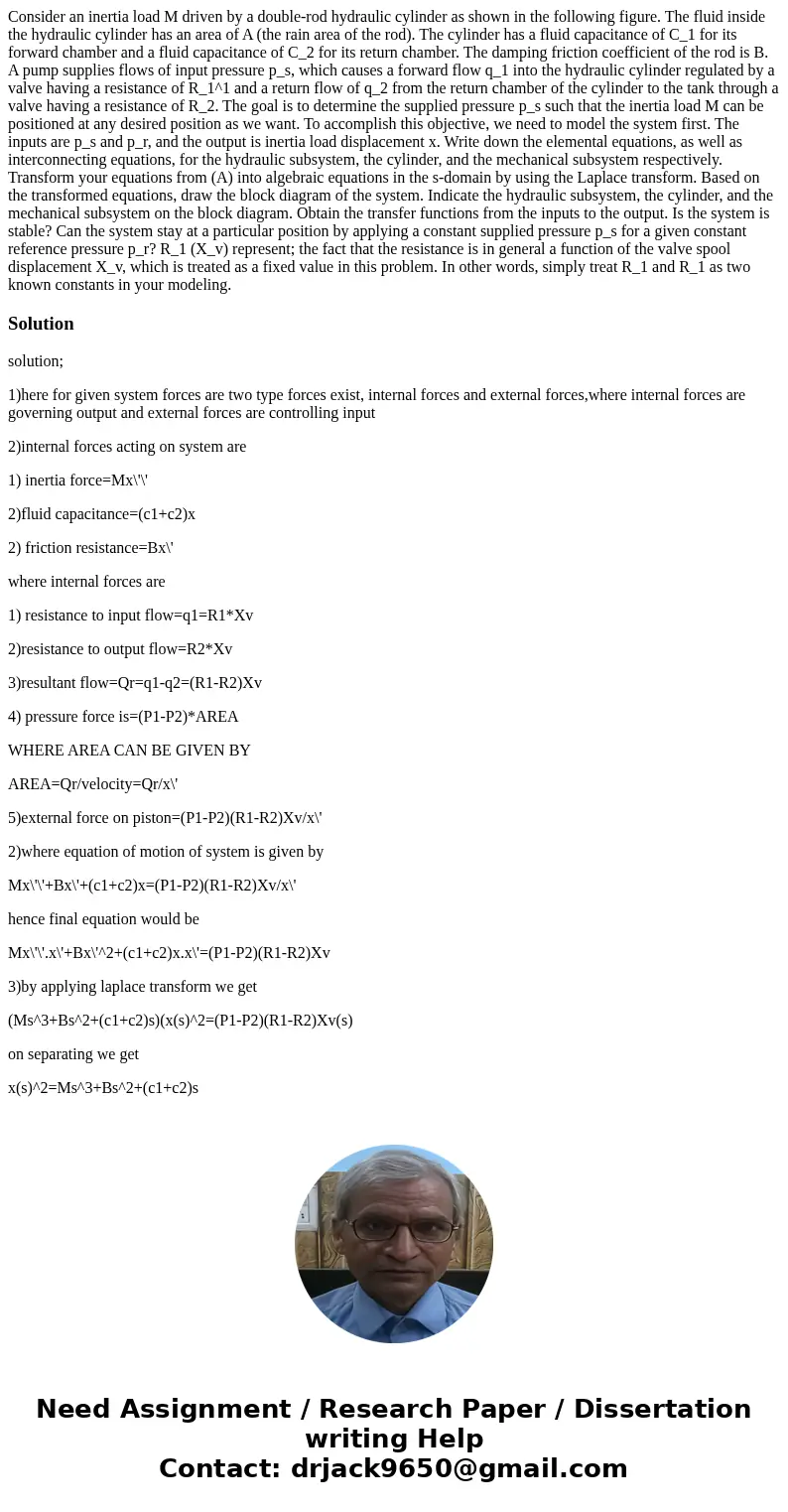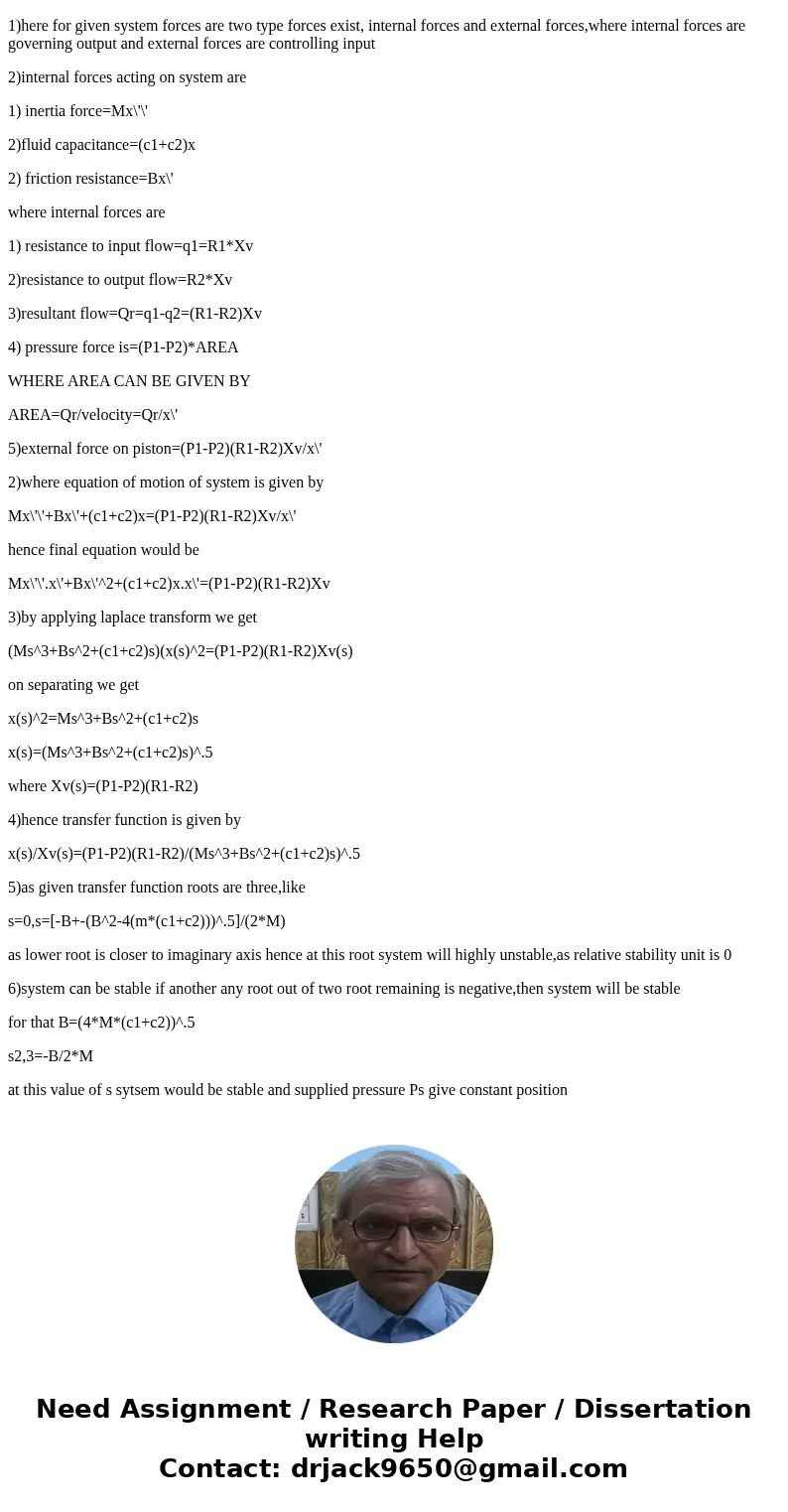Consider an inertia load M driven by a double-rod hydraulic cylinder as shown in the following figure. The fluid inside the hydraulic cylinder has an area of A (the rain area of the rod). The cylinder has a fluid capacitance of C_1 for its forward chamber and a fluid capacitance of C_2 for its return chamber. The damping friction coefficient of the rod is B. A pump supplies flows of input pressure p_s, which causes a forward flow q_1 into the hydraulic cylinder regulated by a valve having a resistance of R_1^1 and a return flow of q_2 from the return chamber of the cylinder to the tank through a valve having a resistance of R_2. The goal is to determine the supplied pressure p_s such that the inertia load M can be positioned at any desired position as we want. To accomplish this objective, we need to model the system first. The inputs are p_s and p_r, and the output is inertia load displacement x. Write down the elemental equations, as well as interconnecting equations, for the hydraulic subsystem, the cylinder, and the mechanical subsystem respectively. Transform your equations from (A) into algebraic equations in the s-domain by using the Laplace transform. Based on the transformed equations, draw the block diagram of the system. Indicate the hydraulic subsystem, the cylinder, and the mechanical subsystem on the block diagram. Obtain the transfer functions from the inputs to the output. Is the system is stable? Can the system stay at a particular position by applying a constant supplied pressure p_s for a given constant reference pressure p_r? R_1 (X_v) represent; the fact that the resistance is in general a function of the valve spool displacement X_v, which is treated as a fixed value in this problem. In other words, simply treat R_1 and R_1 as two known constants in your modeling.
solution;
1)here for given system forces are two type forces exist, internal forces and external forces,where internal forces are governing output and external forces are controlling input
2)internal forces acting on system are
1) inertia force=Mx\'\'
2)fluid capacitance=(c1+c2)x
2) friction resistance=Bx\'
where internal forces are
1) resistance to input flow=q1=R1*Xv
2)resistance to output flow=R2*Xv
3)resultant flow=Qr=q1-q2=(R1-R2)Xv
4) pressure force is=(P1-P2)*AREA
WHERE AREA CAN BE GIVEN BY
AREA=Qr/velocity=Qr/x\'
5)external force on piston=(P1-P2)(R1-R2)Xv/x\'
2)where equation of motion of system is given by
Mx\'\'+Bx\'+(c1+c2)x=(P1-P2)(R1-R2)Xv/x\'
hence final equation would be
Mx\'\'.x\'+Bx\'^2+(c1+c2)x.x\'=(P1-P2)(R1-R2)Xv
3)by applying laplace transform we get
(Ms^3+Bs^2+(c1+c2)s)(x(s)^2=(P1-P2)(R1-R2)Xv(s)
on separating we get
x(s)^2=Ms^3+Bs^2+(c1+c2)s
x(s)=(Ms^3+Bs^2+(c1+c2)s)^.5
where Xv(s)=(P1-P2)(R1-R2)
4)hence transfer function is given by
x(s)/Xv(s)=(P1-P2)(R1-R2)/(Ms^3+Bs^2+(c1+c2)s)^.5
5)as given transfer function roots are three,like
s=0,s=[-B+-(B^2-4(m*(c1+c2)))^.5]/(2*M)
as lower root is closer to imaginary axis hence at this root system will highly unstable,as relative stability unit is 0
6)system can be stable if another any root out of two root remaining is negative,then system will be stable
for that B=(4*M*(c1+c2))^.5
s2,3=-B/2*M
at this value of s sytsem would be stable and supplied pressure Ps give constant position


 Homework Sourse
Homework Sourse